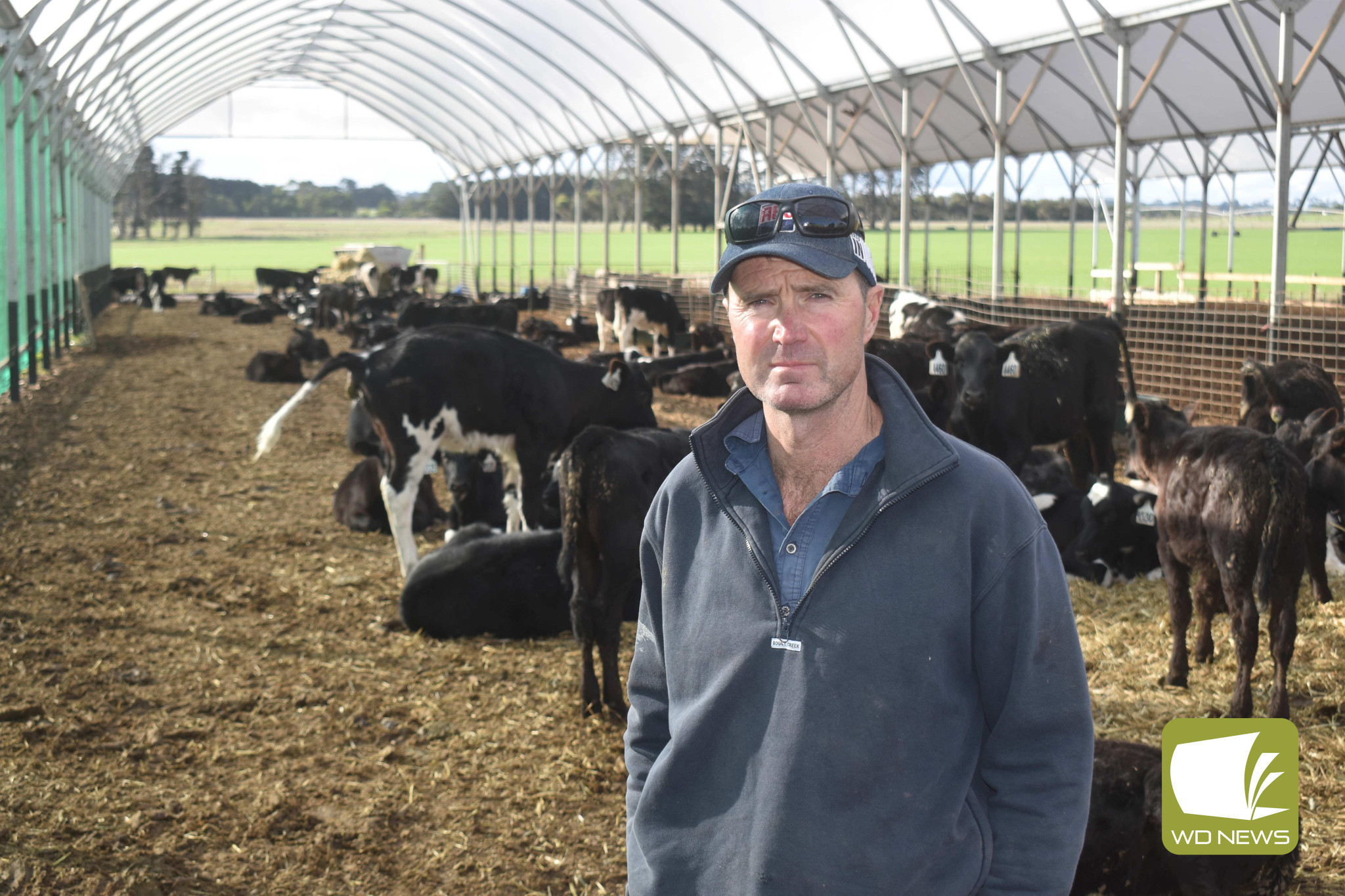Farmer News
24 July, 2025
Shelters the secret to efficient farming
SIMON Rea became the first Australian farmer to build a clear-roofed, deep-litter dairy shelter ten years ago – and he’s still finding new ways to use it.

The shelter was designed to help his family’s Panmure farm increase herd size and production without putting too much stress on pastures and infrastructure, especially during the wet south west Victorian winters.
It has worked beyond expectations, with the herd increasing from 380 to 600 over the decade and Mr Rea becoming a partner in Dairy Shelters Australia.
Now he has found a new purpose for the shelter as the region battles its worst drought in memory.
“This year we’ve been struck with crippling drought conditions in western Victoria but we’ve had somewhere to put our cows while we’re trying to allow every mouthful of grass to grow on the farm,” Mr Rea said.
“At the moment, the last thing you want is a cow on the paddocks.
“I’ve re-planted and it’s trying to grow but you put cows in and the grass won’t grow and there will be nothing in spring.”
Mr Rea said the shelters and adjoining feed pads have been a cost-saver during the dry autumn, reducing the need to feed in the paddocks.
The dry autumn has been the toughest he has experienced in the 15 years he has owned the farm with wife, Pep.
Their irrigation water entitlement ran out in January – the first time this has happened – but he has been able to access a regular supply of hay and keep the cows well fed.
“If that wasn’t the case, it would be massively stressful,” Mr Rea said.
Despite the difficult season, he has decided to keep the cows well-fed to maintain production with only a small drop in numbers, all geared to a quick rebound when conditions improve.
The shelter has been an important management tool in that process.
“One of the things shelters offer is a certain amount of flexibility in farming systems,” Mr Rea said.
Mr Rea said the first shelter was built in 2015 and covers about 3800sqm.
A second 2100sqm shelter was built in 2023 for young stock but it’s also proving valuable as an overflow shed because of the success of the first structure.
“They’ve really been a game changer for our business,” Mr Rea said.
“Before this, it was a battle to milk 400 cows if you’d get caught out by a wet winter or dry autumn.
“I’ve learnt to feed the cows well in and around the shelter and it has allowed our farming business to grow to 550 or 600 cows without worrying about the wet winter ahead and how and where to feed the cows.
“It has gone beyond wherever I thought it would go.”
The shelters have been popular with staff and have helped Mr Rea with his personal outlook. “It helps me cope with wet, depressing winters,” he said.
“The cows love it, particularly as the nights get colder.
“They just pack in and the floors and their own body heat keeps them warmer and more comfortable.
“The typical winter is grass in the day, shelter at night, but when it’s cold and blowy, they’re happy to stay under cover.”
Mr Rea is confident the herd is healthier with the shelters, saying it is good on their feet when the they’re getting proper rest rather than sitting on mud.
“We get a lot less foot issues because the cows are only walking half as far, and it means a lot less track maintenance,” he said.
The cows also seem to carry a bit extra weight and production has edged up.
Over the past decade, Dairy Shelters Australia has installed more than 50 shelters across Australia.
Dairy Shelters Australia was created after Mr Rea and his vet Dr David Colson visited New Zealand to look at options for dairy shelter systems.
While the shelters have retained their basic clear-roof, deep-litter base, Dairy Shelters Australia has been looking at variations, including mesh along the west side for protection from the elements and retractable shade covers for calving.
“Not too much has changed but we are trialling a few things, though ventilation, air flow and light are still the keys to success,” Mr Rea said.
“A solid roof would defeat the purpose.
“We’ve had several farmers who loved it so much in the first year or two that they came back for another span or two and said they should have built it bigger at the start.
“They are easy to extend so we recommend siting them in an open area.”
For more information visit dairysheltersaustralia.com.au.
Read More: local